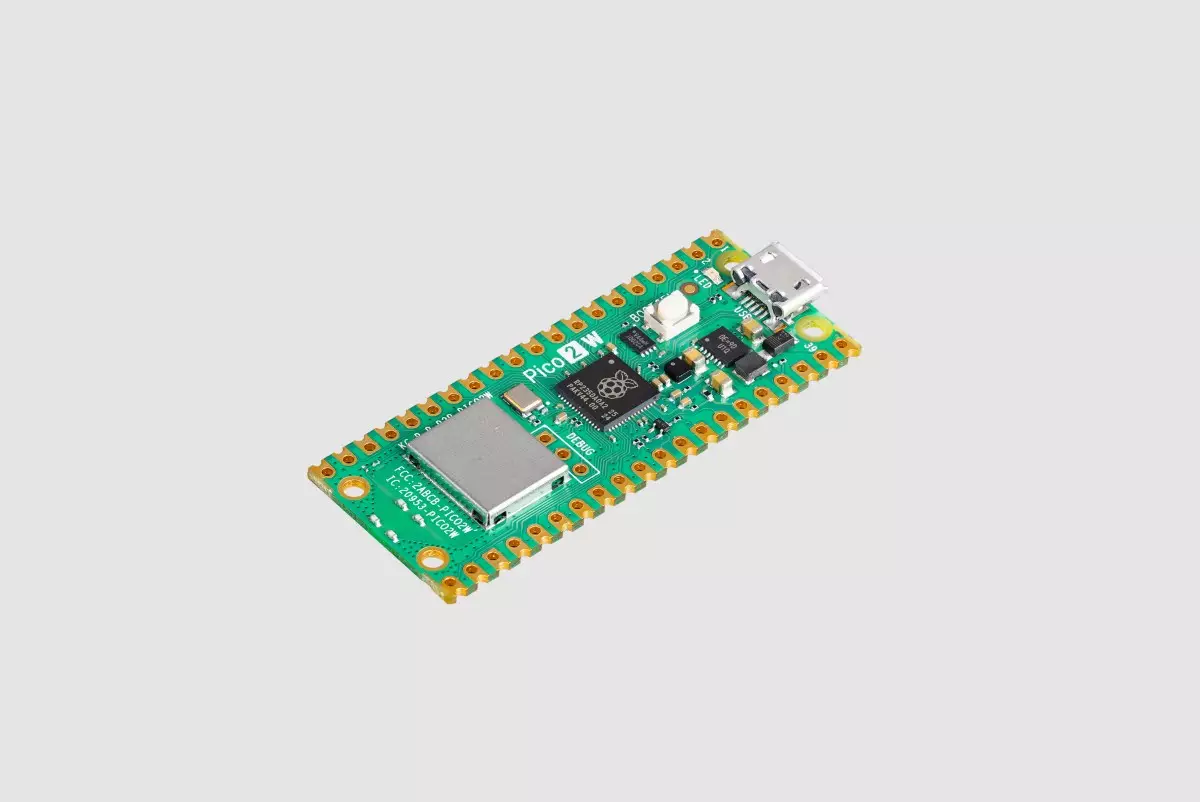The Raspberry Pi Pico 2 W has emerged as a significant advancement in the world of microcontrollers. With its compact size and powerful features, this board allows enthusiasts and developers to embark on an array of hardware projects with ease. At the heart of this device lies the RP2350 microcontroller, a product of Raspberry Pi’s engineering prowess, designed to facilitate control over electronic components in an efficient manner. Unlike traditional Raspberry Pi single-board computers that run full operating systems, microcontrollers like the Pico 2 W provide a streamlined, performance-oriented platform for real-time interactions and controls.
Microcontrollers serve as small-scale command centers, enabling users to manage a multitude of electronic devices and components. The key difference between a microcontroller and a single-board computer is primarily function. While general-purpose computers handle diverse computing tasks, microcontrollers are tailored for specific control and automation roles. Their compact form factor, low power consumption, and reduced cost make them ideal for hobbyists and professionals alike. As you explore the Pico 2 W, you’ll find an array of input and output options, easily identifiable by the multitude of pinholes surrounding the board, that enable seamless integration with external devices.
The Raspberry Pi Pico 2 W boasts impressive specifications designed for versatility. Its dual-core processor architecture operates at 150 MHz, providing the necessary processing power for a wide range of applications. Notably, developers are given the flexibility to choose between Arm Cortex-M33 cores and RISC-V cores, a feature that sets it apart from previous models. This adaptability ensures that users can customize their computing experience based on their project requirements without the need for a complete overhaul of the hardware.
The Pico 2 W comes with a generous 4 MB of on-board flash memory for code storage and 520 KB of SRAM, which, while modest in comparison to modern computing standards, proves sufficient for microcontroller tasks. This simplicity of design allows for quick and straightforward development cycles, making it an attractive option for both beginners and seasoned developers.
One of the significant advantages of the Pico 2 W is its compatibility with various programming languages. While traditional microcontrollers often limit users to C and C++, the Pico 2 W introduces MicroPython into the mix—a simplified version that is Python-inspired and designed specifically for microcontroller programming. This support for multiple languages broadens accessibility and allows developers to utilize familiar coding paradigms. As this board integrates directly with the hardware, users can dive deeply into their projects without the overhead of an operating system.
For those just starting in the microcontroller domain, utilizing a breadboard is a recommended practice. This method allows for rapid prototyping and experimentation without the commitment of soldering components together. Once a design is finalized, users can transition to permanent setups with soldered components, leading to more robust and reliable projects.
The Pico 2 W also steps into the wireless realm, offering support for Wi-Fi and Bluetooth connectivity. While the absence of 5GHz Wi-Fi support may seem like a drawback, the inclusion of 2.4GHz 802.11n and Bluetooth 5.2 prepares developers for a range of IoT applications and wireless projects. For those who require a more cost-effective solution devoid of wireless features, the standard Pico 2 is available without such capabilities, making it a flexible choice for various project requirements.
Raspberry Pi continues to solidify its standing in the industrial sector, with their products now comprising a substantial portion of sales in electronics manufacturing. The Pico 2 W, along with its variants, caters not only to hobbyists but also to larger-scale industrial applications, facilitating streamlined processes and innovative solutions. As Raspberry Pi aims to expand its footprint in both consumer and industrial markets, the versatility of the Pico 2 W positions it as a critical component in the toolkit of both developers and manufacturers.
The Raspberry Pi Pico 2 W represents a significant evolution in microcontroller technology, merging powerful hardware with ease of use and programming flexibility. Its comprehensive features and low-cost accessibility make it an invaluable asset for anyone looking to delve into the world of hardware development. Whether you are a hobbyist pursuing personal projects or a professional aiming to innovate within the industry, the Pico 2 W presents a compelling platform for your creative aspirations.

